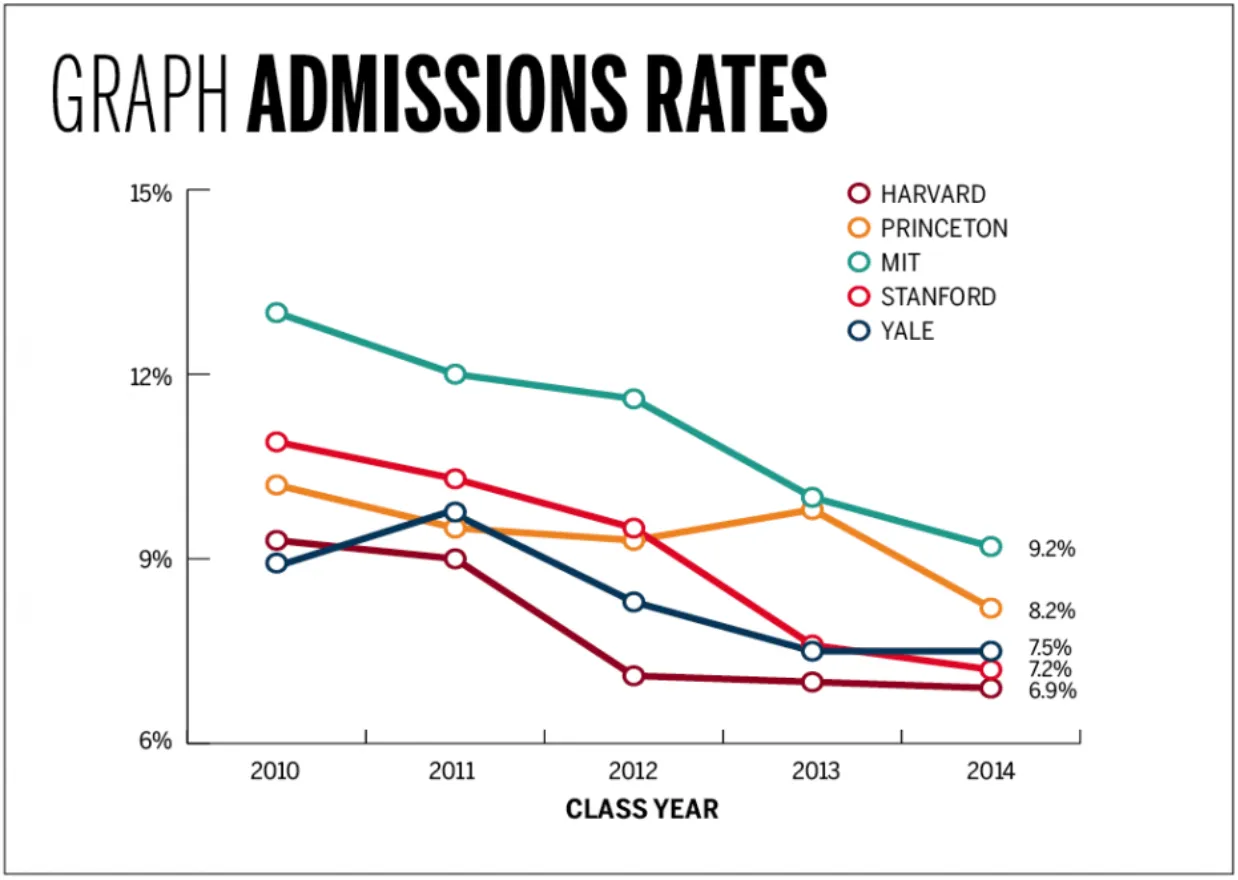Table of Contents
As the college application season comes to a close, it’s common to hear parents and students complain about how much more difficult it is to get into prestigious schools now than it was just a few years ago. While the selectivity of 90% of American colleges and universities are lower today than they were a few decades ago, acceptance rates at the most elite 10% of colleges have plummeted. Stanford, for example, had a 13.2% acceptance rate in 2000, which steadily declined to 10.3% in 2007 and just 5.1% in 2014; and this trend is closely mirrored in other elite institutions.
One reason for this increasing selectivity among selective schools is that the prestige of a college is closely related to its acceptance rate. In the US News & World Report’s college ranking system, a college’s selectivity counts for 12.5% of the total score that is used to compute its ranking. According to David Hawkins, public policy director of the National Association for College Admission Counseling, “A large part of a college’s reputation both from an admissions perspective as well as among students and alumni comes from its selectivity.”
In other words, the lower the acceptance rate of an institution, the more impressive it sounds to have attended that institution. And a major reason why students want to attend a prestigious college is for the status and credibility associated with the school’s brand name; only 5 of the top 10 most selective colleges in 2013 were included in Payscale’s list of top 10 schools whose graduates earn the highest salaries, suggesting that the general student population evaluates colleges more perceived status than by the actual monetary return offered by the school. Therefore, as the selectivity and prestige of a top college increases, its desirability among high school students also increases.
Thus, elite college educations can be viewed as Veblen goods. As the price, or, in the case of colleges, prestige, of a Veblen good increases, the good becomes more desirable in the eyes of consumers, who see the high price as an indication of luxury and status. This increased demand for the good further drives up its price, creating a positive feedback loop.
Veblen goods are based on the idea of desiring goods for the sake of gaining status and credentials in the eyes of society rather than for the intrinsic value of the good. In the case of colleges, this Veblen mentality is creating so much competition that the price of a college degree has been skyrocketing. Between 2002 and 2012, inflation-adjusted prices for undergraduate tuition, room, and board rose by 40% at public schools and 28% at private schools. As a result, student debt has also been rising year after year in the past decade.
There are certainly other factors that have caused acceptance rates at top universities to decrease. For example, as these institutions become more selective, students feel increased pressure to apply to a larger number of schools in order to maximize their chances of being accepted at one of them. This again increases the size of the applicant pool and leads to even lower acceptance rates.
The trend of increasing selectivity at the most selective institutions is not likely to reverse anytime soon. It’s true that demographic surveys predict a decrease in the number of high school seniors in the country over the next few years, and that many colleges are making an effort to expand the size of their freshman classes. However, while this may decrease the average selectivity of U.S. colleges, the most prestigious schools will remain as coveted as before, and the percentage of high schoolers applying to these schools will likely continue to increase for the foreseeable future.





